Grow Big Pumpkins at Home: Ever dreamt of having the biggest, most impressive pumpkin on the block? Imagine the look on your neighbor’s faces when they see your giant gourd! Well, you’re in the right place because this isn’t just a dream – it’s an achievable goal with a little know-how and some DIY magic. For centuries, pumpkins have been a symbol of abundance and harvest, deeply rooted in traditions like Halloween and Thanksgiving. But beyond their festive appeal, growing these giants is a rewarding experience that connects us to nature and the satisfaction of nurturing something truly spectacular.
Let’s be honest, who wouldn’t want to show off a massive pumpkin they grew themselves? It’s a conversation starter, a source of pride, and a fun challenge. But more than that, learning how to grow big pumpkins at home is about understanding the science of gardening, experimenting with different techniques, and ultimately, reaping the rewards of your hard work. This article is packed with easy-to-follow DIY tricks and hacks that will guide you through every step of the process, from selecting the right seeds to providing the optimal growing conditions. So, grab your gardening gloves, and let’s embark on this exciting journey to pumpkin-growing glory!
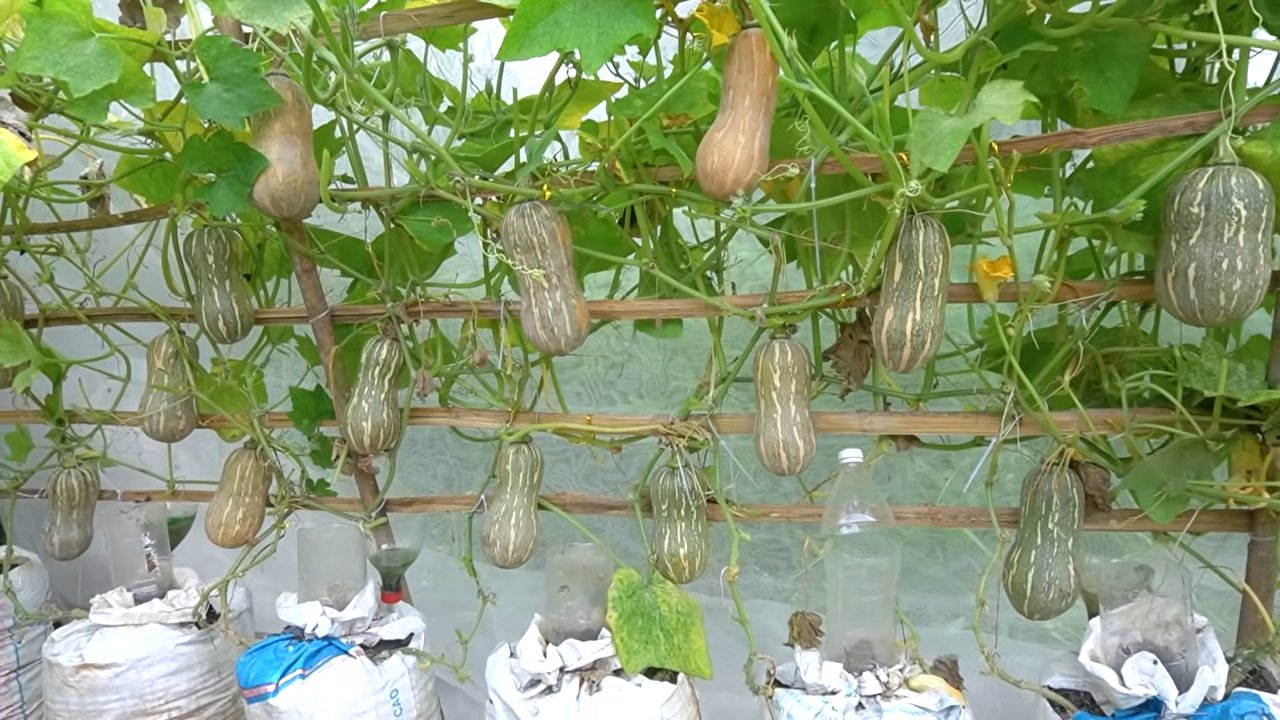
Growing Giant Pumpkins: My Secrets to a Blue Ribbon Winner!
Okay, pumpkin fanatics! Ever dreamed of growing a pumpkin so massive it needs its own zip code? I’m here to tell you, it’s totally achievable, even in your backyard! It takes dedication, a little know-how, and a whole lot of pumpkin love, but trust me, the bragging rights are worth it. This guide will walk you through my tried-and-true method for cultivating a behemoth. Let’s get started!
Choosing the Right Seed: The Foundation of Your Giant
This is where the magic begins. You can’t grow a giant pumpkin from just any seed. You need genetics on your side!
* **Look for “Atlantic Giant” seeds:** These are specifically bred for size. Don’t even think about using seeds from a store-bought pumpkin.
* **Source from reputable growers:** Join a local pumpkin growing club or find online communities. Experienced growers often sell or trade seeds from their prize-winning pumpkins. These seeds have the best potential.
* **Check the pedigree:** Seed pedigrees track the lineage of the seed back to the mother pumpkin and, ideally, the father pumpkin. Look for seeds with a high weight pedigree. The higher the weight, the better the potential for your pumpkin to grow big.
* **Consider the “Stoke’s Strain”:** This is a popular and reliable strain known for producing massive pumpkins.
* **Don’t be afraid to experiment:** Try different seeds from different sources each year to see what works best in your specific climate and soil conditions.
Starting Your Seeds Indoors: Giving Them a Head Start
Getting a jump start on the growing season is crucial, especially in areas with shorter summers.
* **Timing is everything:** Start your seeds indoors about 3-4 weeks before the last expected frost. This usually falls around late April or early May, depending on your location.
* **Use peat pots or biodegradable containers:** These allow you to transplant the seedlings directly into the ground without disturbing the roots.
* **Planting depth:** Plant the seed about 1 inch deep, pointy end down.
* **Soil mix:** Use a well-draining seed starting mix.
* **Warmth is key:** Maintain a soil temperature of 85-90°F (29-32°C) for germination. Use a heat mat if necessary.
* **Humidity:** Cover the pots with plastic wrap or a humidity dome to retain moisture.
* **Light:** Once the seedlings emerge, provide them with plenty of light. A sunny windowsill or grow lights will work.
* **Watering:** Keep the soil consistently moist, but not soggy.
* **Hardening off:** Gradually acclimate the seedlings to outdoor conditions by exposing them to increasing amounts of sunlight and fresh air over a week or two before transplanting.
Preparing the Pumpkin Patch: Creating the Perfect Environment
Giant pumpkins are heavy feeders and need a lot of space. Proper soil preparation is essential.
* **Location, location, location:** Choose a sunny spot that receives at least 6-8 hours of direct sunlight per day.
* **Space requirements:** Each pumpkin plant needs a minimum of 400 square feet of space. Seriously! These vines can spread like crazy.
* **Soil testing:** Get your soil tested to determine its pH and nutrient levels. Aim for a pH of 6.5-7.0.
* **Amend the soil:** Add plenty of organic matter, such as compost, aged manure, and leaf mold. This will improve drainage, aeration, and nutrient content.
* **Fertilizer:** Incorporate a slow-release fertilizer high in phosphorus and potassium. These nutrients are essential for root development and fruit production.
* **Raised beds (optional):** Raised beds can improve drainage and soil temperature, especially in areas with heavy clay soil.
* **Wind protection:** If your area is prone to strong winds, consider building a windbreak to protect the plants.
Transplanting Your Seedlings: Setting Them Up for Success
Handle these delicate seedlings with care!
* **Timing:** Transplant the seedlings after the last frost, when the soil has warmed up to at least 60°F (15°C).
* **Planting distance:** Space the plants at least 10-15 feet apart.
* **Planting technique:** Dig a hole slightly larger than the root ball. Gently remove the seedling from the pot and place it in the hole. Backfill with soil and water thoroughly.
* **Protection:** Protect the seedlings from pests and diseases by using row covers or netting.
Vine Training and Pruning: Directing the Energy
This is where you start shaping your pumpkin’s destiny!
* **Vine training:** As the vines grow, train them to grow in the desired direction. This will help maximize sunlight exposure and prevent overcrowding. I usually train the main vine to grow straight out from the planting point, and then train the secondary vines to grow perpendicular to the main vine.
* **Pruning:** Prune the vines regularly to remove excess foliage and direct the plant’s energy towards fruit production. Remove any female flowers that appear before the main vine has reached about 10 feet in length.
* **Selecting the fruit:** Once the vines are established, select one or two promising female flowers to pollinate. Remove all other female flowers. This will ensure that the plant focuses its energy on growing the chosen fruit.
* **Pollination:** Hand-pollinate the female flowers early in the morning, when the pollen is most viable. Use a small paintbrush to transfer pollen from a male flower to the stigma of the female flower. Cover the pollinated flower with a bag to prevent insects from interfering.
* **Marking the fruit:** Once the fruit has been pollinated, mark it with the date and the name of the seed variety. This will help you track its growth and development.
Watering and Fertilizing: Fueling the Growth
Giant pumpkins are thirsty and hungry!
* **Watering:** Water deeply and regularly, especially during hot, dry weather. Aim for at least 1-2 inches of water per week. Use a soaker hose or drip irrigation to deliver water directly to the roots. Avoid overhead watering, which can promote fungal diseases.
* **Fertilizing:** Fertilize regularly with a balanced fertilizer, such as 20-20-20. Supplement with a fertilizer high in phosphorus and potassium during fruit development.
* **Foliar feeding:** Apply a foliar fertilizer every 1-2 weeks to provide the plant with essential micronutrients.
* **Calcium:** Calcium is essential for cell wall development and preventing blossom end rot. Supplement with calcium nitrate or calcium chloride.
* **Magnesium:** Magnesium is important for chlorophyll production and photosynthesis. Supplement with Epsom salts.
Protecting Your Pumpkin: Shielding It from Harm
These giants are vulnerable!
* **Sun protection:** As the pumpkin grows, protect it from sunburn by shading it with a tarp or blanket.
* **Pest control:** Monitor the plants regularly for pests, such as squash bugs, squash vine borers, and aphids. Use organic pest control methods, such as insecticidal soap or neem oil.
* **Disease prevention:** Prevent fungal diseases by providing good air circulation and avoiding overhead watering. Apply a fungicide if necessary.
* **Rodent control:** Protect the pumpkin from rodents, such as mice and rats, by setting traps or using repellents.
* **Weight distribution:** As the pumpkin grows, it can become very heavy and put stress on the vine. Support the pumpkin with a sling or platform to distribute the weight evenly. I use old tires filled with sand.
Harvesting Your Giant: The Grand Finale!
The moment you’ve been waiting for!
* **Timing:** Harvest the pumpkin when it is fully mature and the stem has started to dry out. This usually occurs in late September or early October.
* **Lifting:** Use a forklift or other heavy equipment to lift the pumpkin. Be careful not to damage the stem or the skin.
* **Transportation:** Transport the pumpkin on a pallet or trailer. Secure it with straps to prevent it from rolling.
* **Weighing:** Weigh the pumpkin on a certified scale.
* **Display:** Display your giant pumpkin with pride!
My Extra Tips for Giant Pumpkin Glory!
* Join a pumpkin growing club! The camaraderie and shared knowledge are invaluable.
* Keep a detailed journal. Track everything from seed source to watering schedules. This will help you learn from your mistakes and improve your results next year.
* Don’t be afraid to experiment. Try different techniques and fertilizers to see what works best for you.
* Talk to your pumpkin! Okay, maybe it sounds crazy, but I swear it helps. Show it some love and positive energy!
* Most importantly, have fun! Growing giant pumpkins is a challenging but rewarding hobby. Enjoy the process and celebrate your successes, no matter how big (or small) your pumpkin turns out to be.
Good luck, and happy growing! I can’t wait to see your giant pumpkin photos!
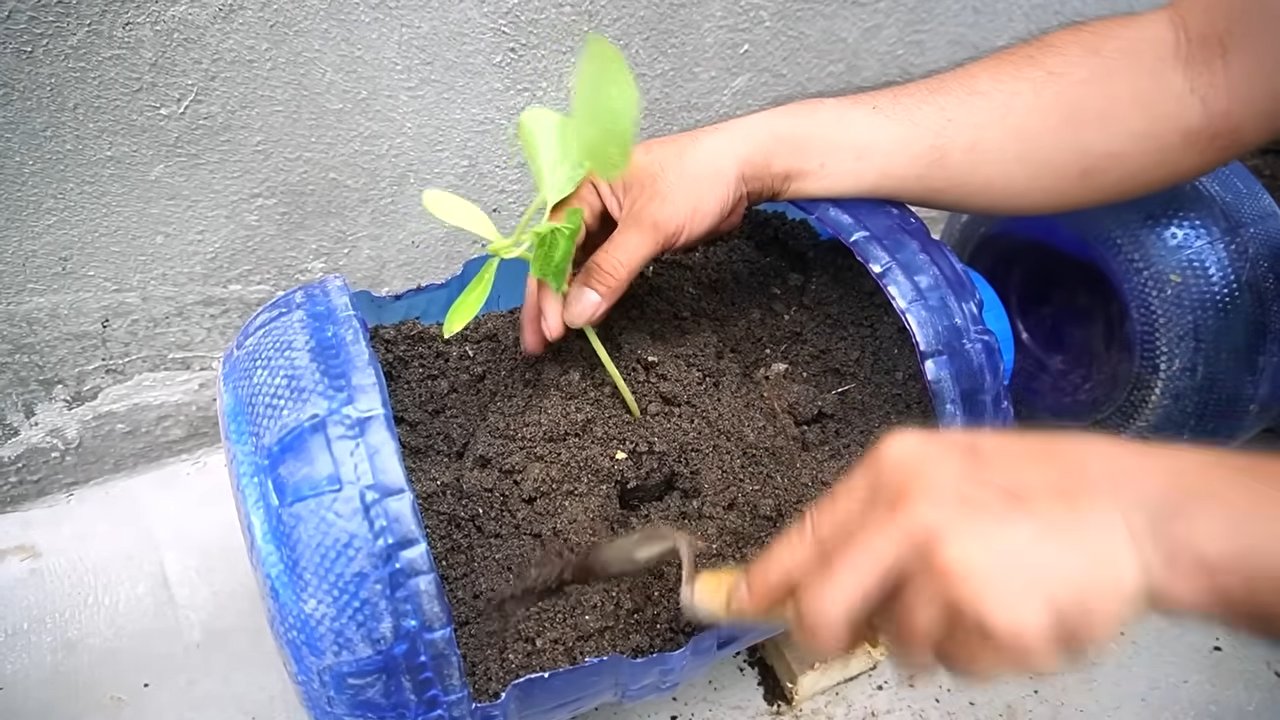
Conclusion
So, there you have it! Growing truly massive pumpkins at home might seem like an intimidating feat reserved for seasoned agriculturalists, but with the right knowledge, a little dedication, and our DIY trick, you can absolutely cultivate a prize-winning gourd that will be the envy of the neighborhood. This isn’t just about growing a pumpkin; it’s about embarking on a rewarding journey, connecting with nature, and experiencing the sheer joy of nurturing something extraordinary from a tiny seed.
This DIY trick, focusing on strategic pruning and targeted feeding, is a game-changer because it allows you to channel all the plant’s energy into producing a single, magnificent fruit. Forget about dozens of smaller pumpkins; we’re talking about one behemoth that will redefine your definition of “pumpkin spice latte” season. The satisfaction of watching your pumpkin swell week after week, knowing you played a crucial role in its growth, is unparalleled.
But don’t just take our word for it. We urge you to try this method yourself. Experiment with different compost teas, adjust the pruning schedule based on your local climate, and see what works best for your specific pumpkin variety. Consider trying variations like adding mycorrhizae to the soil at planting to enhance nutrient uptake, or using shade cloth during the hottest part of the day to prevent sunscald. You could even try a different type of fertilizer, such as one specifically formulated for fruiting vegetables, to see if it boosts growth even further.
Remember, growing giant pumpkins is a learning process. There will be challenges, setbacks, and maybe even a few pumpkin-related mishaps along the way. But that’s all part of the fun! The key is to stay persistent, keep learning, and never be afraid to experiment.
We are confident that this DIY trick will significantly increase your chances of growing a truly impressive pumpkin. It’s a simple, effective, and relatively inexpensive way to maximize your pumpkin’s potential. So, grab your seeds, prepare your soil, and get ready to witness the magic of nature unfold before your very eyes.
And most importantly, we want to hear about your experiences! Share your photos, tips, and stories with us in the comments below. Let’s create a community of giant pumpkin growers, sharing our knowledge and inspiring each other to push the boundaries of what’s possible. What worked for you? What didn’t? What unexpected challenges did you face? Your insights could be invaluable to other aspiring pumpkin champions. Let’s grow big pumpkins together!
Frequently Asked Questions (FAQ)
What exactly is the “DIY trick” you’re referring to?
The DIY trick centers around two key components: strategic pruning and targeted feeding. Strategic pruning involves carefully selecting the most promising pumpkin vine and removing all other vines and female flowers. This directs all the plant’s energy into developing a single pumpkin. Targeted feeding involves providing the pumpkin plant with a consistent supply of nutrients, particularly phosphorus and potassium, which are essential for fruit development. We recommend using a balanced fertilizer early on, then switching to a fertilizer higher in phosphorus and potassium as the pumpkin begins to grow. Compost tea is also an excellent natural source of nutrients.
How often should I prune my pumpkin plant?
Pruning should begin as soon as the plant starts to develop multiple vines. Select the strongest, healthiest vine and remove all others. Continue to monitor the plant regularly and remove any new vines that emerge. Also, remove any female flowers that appear on the vine after you’ve selected the pumpkin you want to grow. The frequency of pruning will depend on the growth rate of your plant, but aim to check it at least once a week.
What kind of fertilizer should I use for my giant pumpkin?
In the early stages of growth, use a balanced fertilizer (e.g., 10-10-10) to promote overall plant health. Once the pumpkin starts to develop, switch to a fertilizer higher in phosphorus and potassium (e.g., 5-15-15) to support fruit development. You can also supplement with compost tea or other organic fertilizers. Always follow the instructions on the fertilizer label and avoid over-fertilizing, which can damage the plant.
How much water does a giant pumpkin plant need?
Giant pumpkin plants require a significant amount of water, especially during hot weather. Water deeply and regularly, ensuring that the soil remains consistently moist but not waterlogged. Aim to provide at least 1-2 inches of water per week, either through rainfall or irrigation. Monitor the plant closely and adjust watering as needed based on weather conditions and soil moisture levels. Consider using a soaker hose or drip irrigation system to deliver water directly to the roots.
How do I protect my giant pumpkin from pests and diseases?
Regularly inspect your pumpkin plant for signs of pests and diseases. Common pests include squash bugs, squash vine borers, and aphids. Common diseases include powdery mildew and fungal rot. Use organic pest control methods whenever possible, such as insecticidal soap or neem oil. To prevent diseases, ensure good air circulation around the plant and avoid overhead watering. Remove any infected leaves or fruits promptly. You can also use copper fungicide to prevent fungal diseases.
What if my pumpkin stops growing?
There are several reasons why a pumpkin might stop growing. It could be due to insufficient nutrients, lack of water, pest or disease problems, or even stress from extreme weather conditions. First, check the soil moisture and nutrient levels. If the soil is dry, water deeply. If the nutrient levels are low, apply fertilizer. Next, inspect the plant for signs of pests or diseases and take appropriate action. If the weather is extremely hot or cold, provide shade or protection as needed. If the pumpkin still doesn’t resume growth, it may be necessary to remove it and start again with another female flower.
How do I know when my giant pumpkin is ripe?
A ripe giant pumpkin will have a hard, thick rind that is resistant to scratching. The stem will also be dry and hardened. The color of the pumpkin will vary depending on the variety, but it should be a deep, uniform color. You can also tap the pumpkin and listen for a hollow sound.
Can I really grow a giant pumpkin in my backyard?
Yes, absolutely! While growing a giant pumpkin requires some effort and dedication, it is definitely possible to do it in your backyard. The key is to provide the plant with the right conditions, including plenty of sunlight, fertile soil, adequate water, and proper care. With our DIY trick and a little patience, you can grow a pumpkin that will amaze your friends and neighbors.
What are some common mistakes to avoid when growing giant pumpkins?
Some common mistakes include: neglecting soil preparation, overwatering or underwatering, failing to prune properly, neglecting pest and disease control, and harvesting the pumpkin too early. By avoiding these mistakes, you can significantly increase your chances of success.
How long does it take to grow a giant pumpkin?
It typically takes about 120-150 days to grow a giant pumpkin from seed to harvest. The exact time will depend on the variety of pumpkin, the growing conditions, and the weather. Start your seeds indoors about 4-6 weeks before the last expected frost, and transplant them outdoors after the danger of frost has passed.

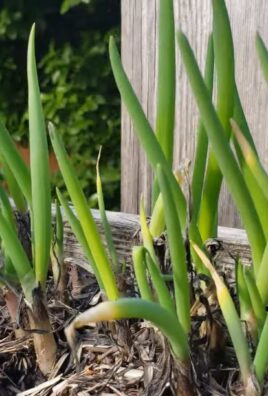
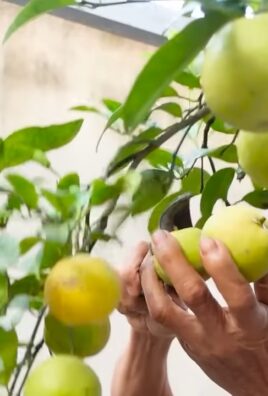
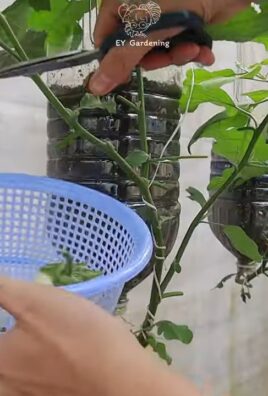
Leave a Comment